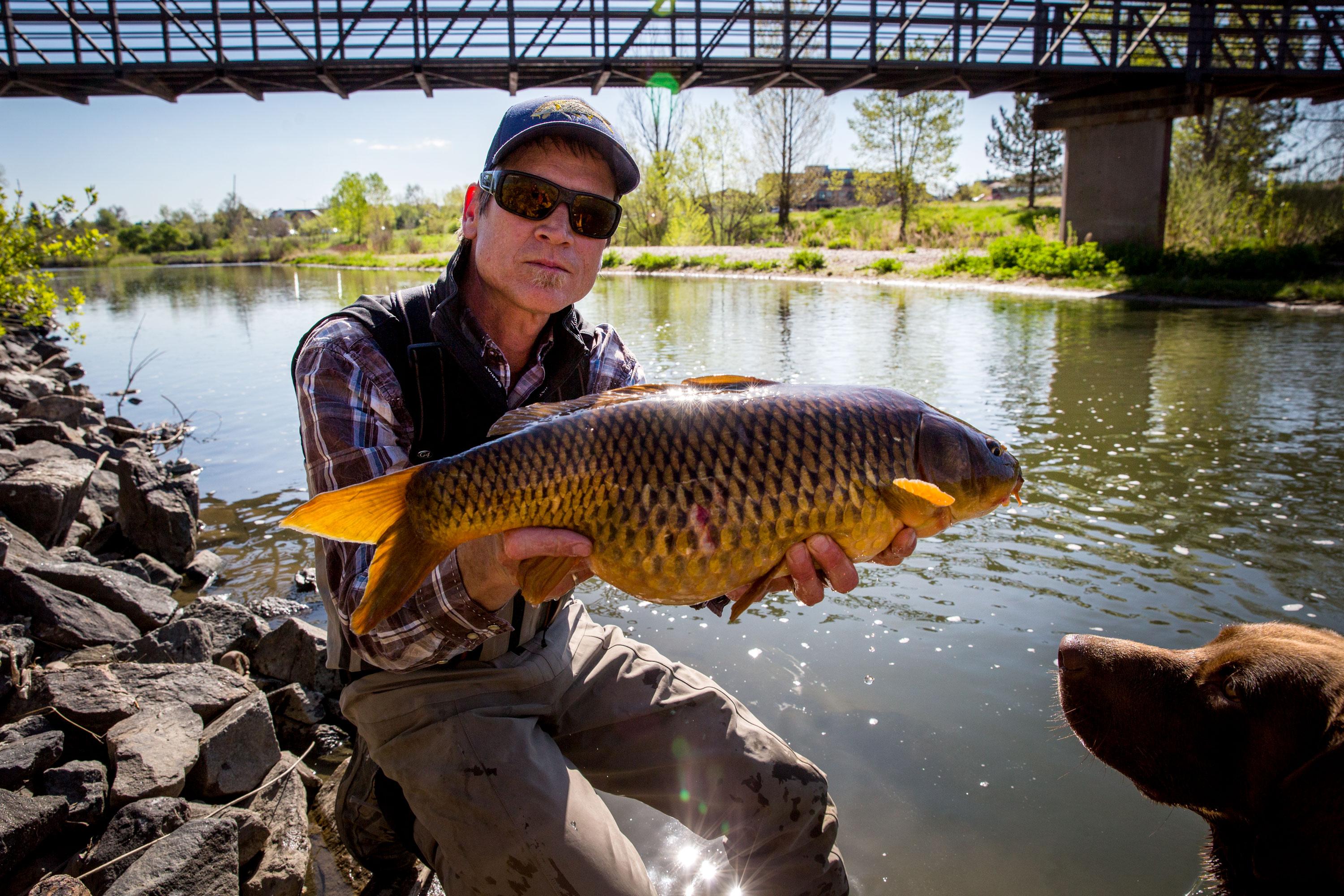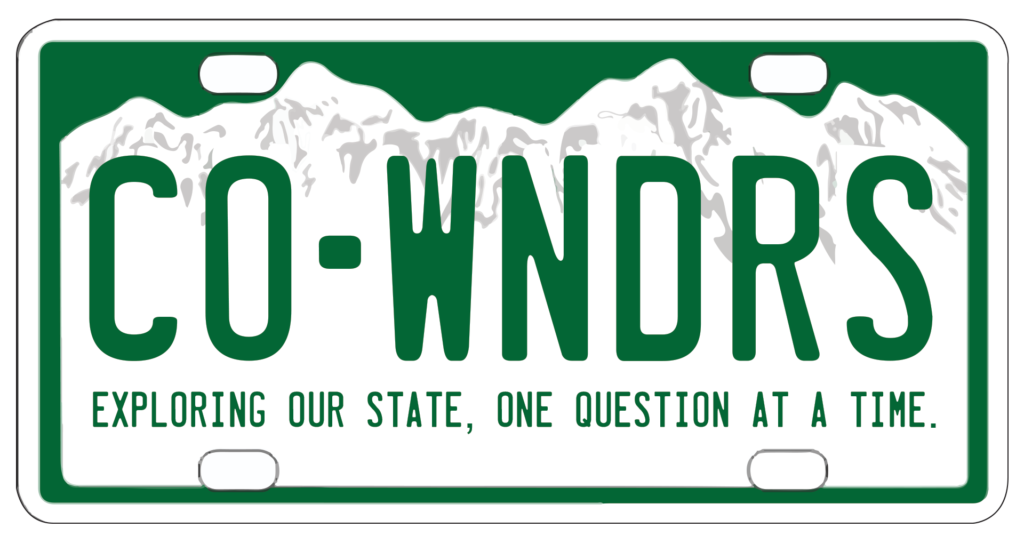
It’s a beautiful day and you’re ready to fish. Since it’s early enough in the season that you still have lingering trauma from ski traffic, maybe you don’t want to drive for hours on busy highways to get to a suitable lake or stream. Fear not.
The South Platte River, which stretches from Park County to Nebraska, is one convenient place to cast your lure instead.
“I’ve caught a 26-inch Rainbow, caught a couple of 24-inch browns upriver from where we’re at, which is literally a fish of a lifetime for many anglers,” said Dan Lundahl, a frequent urban fisher on the Denver span of the Platte. “And then, you know, the occasional shopping cart is always fun, too.”
Lundahl said he’s pulled out everything from plastic bags to shirts, hats and even boots. He fishes for fun so he releases his catch back into the river.

But another Denver fisherman, who grew up eating his catch in Iowa, said it “seems like I would be able to eat the fish out of the Platte River that you would catch just right downtown.”
Sadly, Eric Dow said he’s been told not to, so he hasn’t cooked up his catch. He asked Colorado Wonders to find out because he worries about the water quality and if the fish are healthy.
As the Platte meanders through Denver, it’s lined with lots of potential sources of pollution: I-25, railroad tracks, an Xcel power plant and other industrial sites. Several different agencies have a hand in monitoring water quality, so there’s no one place to go for an answer about the fish.
Denver Public Health & Environment workers collect samples each week when the weather is warm. Environmental Administrator Jon Novick said that’s when people are most likely to be at the river.
“For public health, for people recreating in the river, E. coli is probably the most important one, but we’re also monitoring for nitrogen and phosphorus and sediment as well as metals,” he said.
If tests find something harmful to human health, the department would warn the public. But Novick said it’s been about a decade since they’ve had to.
The agency isn’t sampling fish to determine whether or not they’re safe to consume, he said, but he notes it’s an urban stream and there are pollutants that people may not want to be exposed to.

Kristy Richardson, an environmental toxicologist with Colorado’s Department of Public Health and Environment, said they’ve “looked at 96 percent of the river and 75 percent of those river miles are meeting all of our water quality standards.”
The other 25 percent of the river that doesn’t meet standards is located in areas where there’s urban development, wastewater and sedimentation, Richardson said. Some of that is in the Denver metro area but there are other segments of the river that don’t meet standards either.
Richardson said dischargers, like from a water treatment facility, for example, are required to meet certain permitting standards to protect the environment and public health. For those who don’t meet the guidelines, the state works with them to clean up their pollution. In some cases, the state may even fine polluters for serious violations.
Even though there are some troubled spots, Richardson said the overall river health is good.
“We have a lot of information that tells us that if we have a water system that’s meeting water quality standards and we have a healthy fish population and a healthy bug population living in the river then the water itself is probably of very high quality,” she said.
CDPHE doesn’t test fish either, but Richardson does recommend following state and federal guidelines of eating between one and three servings of fish per week.
There’s also another source of potential pollution in the Platte: You.
The water that goes down your sink, your shower and even your toilet goes to Metro Wastewater’s Robert W. Hite Treatment Facility in central Denver. It’s one of several plants along the river that treats water and dumps it back into the Platte.
Water quality scientists Jordan Parman and Steve Lundt monitor the river downstream of the plants’ discharge where they have a habitat improvement project for fish.
“We noticed right away, even a few months after completion of this construction that we had more fish, more individuals, so a species abundance and also a greater diversity of fish so a number of species,” Parman said.

Before the wastewater treatment plant began operating in 1966, the river smelled bad and people would dump trash in it, he said. Now, Parman points to the thriving fish as proof the treated water has helped clean up the river.
Lundt said he wouldn’t worry too much about eating the fish because of that.
“As a water quality scientist with a master’s degree in water quality and around chemistry and all that stuff, I know that fish consumption, you probably shouldn’t eat a ton of them,” he said. “So if I hadn’t eaten fish for a long time, I would say, yeah, I would eat it.”
Alan Vajda is one researcher who said there’s more to consider before eating fish from the South Platte. He’s an associate professor at the University of Colorado Denver and studies the impact chemicals have on fish.
“Mercury is far from being the only concern to fish health,” he said. “Even if wastewater treatment plants were doing everything they could do to remove 100 percent of 100 percent of chemicals, there would still be a problem.”

There are contaminants from storm drains that don’t get treated. There’s also runoff “from agricultural operations, from intensive animal feedlots with antibiotics, hormones and other drugs, as well as the legacy contaminants, many of which were banned decades ago but persist in our aquatic ecosystems.”
Even when the water is well-treated for contaminants, Vajda said you’ll still see subtle effects on fish health like an odd sex ratio or intersex fish. And just because the fish appear healthy, doesn’t mean the fish that reproduce and grew up in that section of the river are actually healthy.
Vajda said he definitely wouldn’t eat a large fish from the Platte because they’re at the top of the food chain and likely have more contaminants. He warns against children and pregnant women consuming Platte fish at all.
Which brings us back to the main question, should you eat a fish you catch in the South Platte? There doesn’t seem to be an official consensus, but maybe actual fisherman can be the final arbiter.
Scott Long, a contributor to the Strip-Set Podcast that covers fly fishing all over the country, fishes on the Platte a lot in the winter. When de-icer is put on the roads during snowstorms, he said the runoff flows into the river, turning it brown.
“You know that all the fish in here, just by the nature of the food chain, are ingesting all of that,” he said.
Long suspects that if you sample the fish meat, “you’d find some stuff that you wouldn’t want to eat.” Dan Lundahl said he would eat the fish if he was desperate and if it was his only source of food.
In the end, that tacklebox wisdom might be the best advice.
Are you curious about something in the Centennial State? Ask us a question via Colorado Wonders and we’ll try to find the answer.








